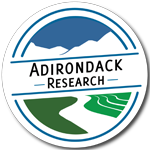The Hidden Costs of Road Salt
The Hidden Costs of Road Salt
What you don’t know can hurt you.
 Everyone wants to be as safe as possible when they drive – that is why we use de-icing chemicals on snowy roads in winter. Salt (sodium chloride) is the primary chemical de-icer used by the majority of states in the U.S. because it is inexpensive compared to alternatives – or at least we assume it is. But, Is it really the least expensive?” Read on to learn what we think.
Everyone wants to be as safe as possible when they drive – that is why we use de-icing chemicals on snowy roads in winter. Salt (sodium chloride) is the primary chemical de-icer used by the majority of states in the U.S. because it is inexpensive compared to alternatives – or at least we assume it is. But, Is it really the least expensive?” Read on to learn what we think.
Our math is flawed
The amount of money the state and local municipalities spends on salt is calculated based on the initial cost to purchase the material as well as distribution cost. Base on this cost, most municipalities (and the state) have determined that salt is the most cost-effective de-icer. As a result, a lot of salt is purchased and used (approximately 836,020 tons per year* to be exact). Everyone is happy with the costs, and life goes on. It’s a good purchasing method – it makes sense.
But, there are several issues with the rationale behind this method. And, some of these are really big issues. The method fails to take into account several hidden costs. These include a more rapid depreciation rate on personal vehicles, corrosion of public infrastructure including bridges, and costly pollution caused by salt runoff into waterways and aquifers.
 When driving on winter roads, our cars pick up bits of road salt. Often some of this salt can be washed off the body of the car before the car starts to rust. However, quite a bit of the salt gets kicked up into the underbelly of the car and sits in the hidden areas of the car rusting away important parts. All of this corrosion due to salt can lead to a more rapid depreciation of your cars value.
When driving on winter roads, our cars pick up bits of road salt. Often some of this salt can be washed off the body of the car before the car starts to rust. However, quite a bit of the salt gets kicked up into the underbelly of the car and sits in the hidden areas of the car rusting away important parts. All of this corrosion due to salt can lead to a more rapid depreciation of your cars value.
The National Association of Corrosion Engineer’s found that “Ten-year-old cars showed a ~20 percent decrease in resale value in corrosion-affected states compared to southwestern states.” (NACE, 2002)
These costs are real and affect every person in New York who owns an automobile. While public infrastructure is not as direct an economic loss as corrosion on personal vehicles, bridge repair costs also fall on the average citizen through taxes.
An estimated $8.3 billion is required to repair corroded bridges annually (NACE, 2002).
 That means that the corrosion cost due to one ton of road salt adds roughly $615 of public bridge repairs. To put that in perspective, road salt usually costs $20-$30 per ton. If counties took into account, the damage done to public infrastructure the cost per ton of salt would be roughly 20 times as much. But these numbers have not been accurately calculated. We need to calculate this so that we know the real cost of road salt.
That means that the corrosion cost due to one ton of road salt adds roughly $615 of public bridge repairs. To put that in perspective, road salt usually costs $20-$30 per ton. If counties took into account, the damage done to public infrastructure the cost per ton of salt would be roughly 20 times as much. But these numbers have not been accurately calculated. We need to calculate this so that we know the real cost of road salt.
Fortunately, there are several alternative de-icing substances to road salt. One such alternative is sand. While sand’s initial cost exceeds that of salt, the overall cost due to corrosion, fresh water contamination, and road repairs is likely much lower.
Adirondack Research is working with ADKAction.org to calculate some of these hidden costs resulting from the use and overuse of road salt. ADKAction.org is committed to finding a safe and cost-effecting alternative to road salt. If you are interested in joining this initiative please contact ADKAction.org at info@adkaction.org and read more at http://adkaction.org/roadsalt
Anna Mowat
Hamilton College Adirondack Program
Adirondack Research Intern
